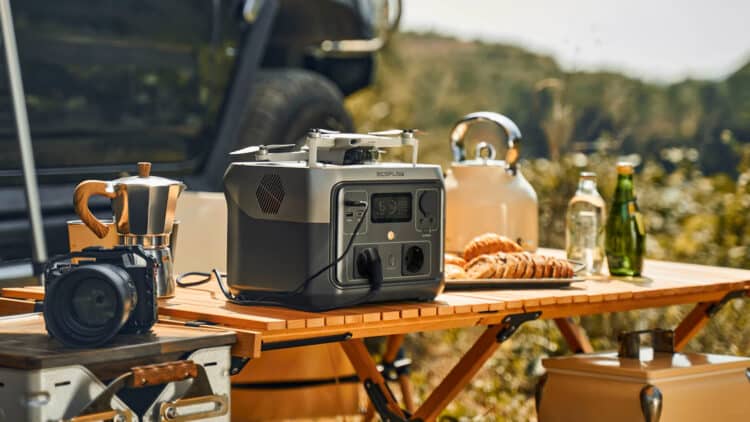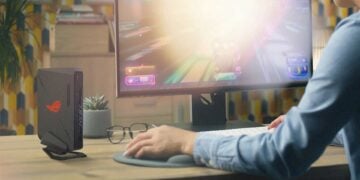EcoFlow launched its 2nd-generation portable charging solutions in 2023, improving on a successful range from its first iterations. I reviewed the impressive EcoFlow DELTA 2 shortly after its release, which became a critical aspect of my daily life in our household. The unit is still my current daily driver, and, at times, I even took it along for my travels as a backup. That said, at a weight of 12 kg, it’s not the most portable option from the EcoFlow stables. Released alongside the DELTA 2 was the EcoFlow RIVER 2 series in two options – a baseline RIVER 2 and the RIVER 2 Max, which doubles the capacity.
While we were provided with some respite from loadshedding towards the end of 2023, we still haven’t managed to elude the grasp of outages across the country entirely. The EcoFlow RIVER 2 Max was a crucial travel companion after hitting the road again between December and January. As part of the testing, I utilised the portable power station as a daily driver in various scenarios to test its portability, durability and maximum capabilities.
Build and Design
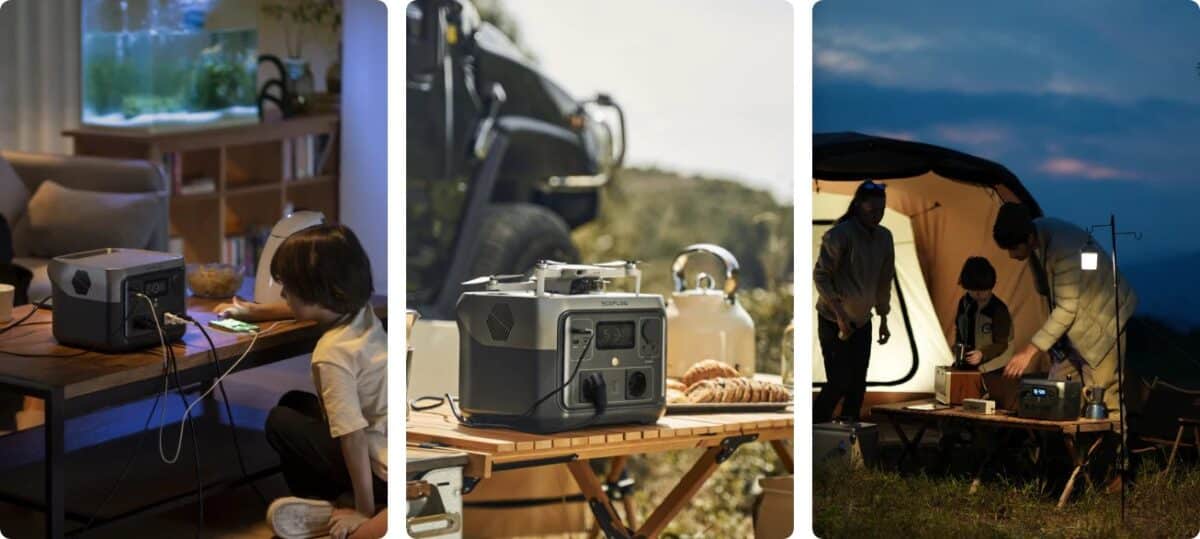
The RIVER 2 Max follows the design ethos EcoFlow has employed since its first release. It has a similarly updated design of the DELTA 2, albeit it is shorter and broader. While aesthetics isn’t the top priority for power solutions, it has played a role in user selection, especially when used daily.
Most of the device is manufactured in a plastic polymer with a two-tone, contrasting grey finish. Its build is solid and has no signs of flex or weak points. Unlike the larger DELTA 2, it doesn’t have a premium design and features all its output ports on the front, with the rear utilised for the two types of power input. Its carry handle is positioned on the rear, which is not over the top like most portable charging stations. I prefer this design strategy, as it allows users to place devices on the top while charged. This proved quite helpful on the road, placing my Wi-Fi router and smartphone on the top while plugged in.
Overall, it’s a more portable approach, with a much smaller and lighter build than the DELTA 2. The RIVER 2 Max measures 270x260x196mm and is about half the weight at 6.2KG. It’s small enough to fit in your cupboard and light enough to carry around in one hand to ensure portability.
It features a smaller version of the LED screen, which provides all the required information on the device’s status. Information here includes hours remaining (which switches to hours to complete charging when plugged in), a percentage circle in the centre, and the input and output (in watts) on the right-hand side. Slightly above the input indicator are the Wi-Fi and battery symbols. This battery symbol, however, is to indicate you have set custom charging and discharging levels.
There is a decent mix of ports to utilise when required. This includes x3 USB Type-A ports, a single Type-C port on the front left, two DC outputs, a car outlet on the front right, and x2 AC outputs on the front bottom. The configuration will allow you to charge and run most of the supported devices. However, I would have preferred to have swapped out one of the USB Type-A ports for a Type-C port for futureproofing. The AC and DC outputs have an on/off power button, and the USB outputs use a plug-and-play approach.
RELATED: EcoFlow DELTA 2 and RIVER 2 Series Launched in South Africa
EcoFlow RIVER 2 Max Specifications
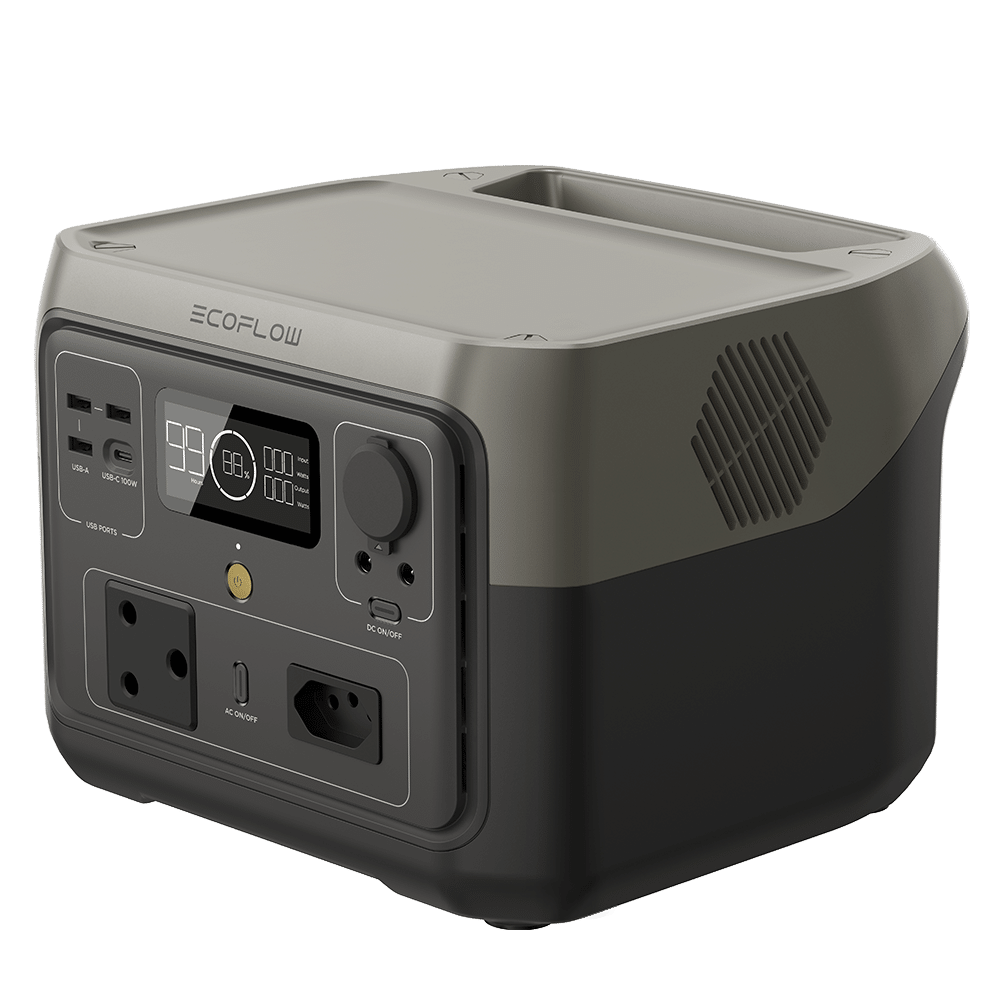
There is quite a lot to cover when it comes to specifications. Thankfully, these specifications are pretty straightforward across the two types of RIVER 2 series units, so there aren’t any complications in choosing which option would be better suited for your requirements. Below is a quick summary of the EcoFlow RIVER 2 Max specifications.
First, it has a 512Wh capacity battery, with a maximum 1,000W output using X-Boost and 500W under typical loads. The X-Boost feature allows for any surge in power for a few seconds to prevent any damage, which is very useful when operating with loadshedding.
There are three types of inputs via the two ports on the rear. The first is AC input, which operates between 220 and 240V 50Hz/60Hz with a maximum 660W input. The two other input options are solar and car charging, which connect via a proprietary input port. The solar input ranges between 11 and 50V 13A at a maximum input of 220W, while the car input has a 12 or 24V input at 8A at a maximum input of 100W. I’ll discuss the battery performance in more detail in a subsequent section.
The three USB Type-A ports all have the same output specifications. More specifically, it has a 5V 2.4A 12W output. The Type-C port, however, is much more practical and features input and output specifications. As such, it supports multiple voltages, including 5, 9, 12, 15 and 20V, with a 5A current and 100W maximum output.
You can download the EcoFlow app on Android and iOS for easy use. It connects to the charging station via Bluetooth or Wi-Fi. The app is essential to optimising your device, allowing you to make all the necessary configurations, such as timers, charging speeds, surge and firmware updates, to name a few. It lets you remotely connect to your device from any location to ensure its optimal status. Unfortunately, there’s no Huawei version app yet via the AppGallery.
RELATED: EcoFlow DELTA 2 Brings Extended Gaming During Loadshedding
RIVER 2 Max Performance
Irrespective of all the specifications on the hardware side, real-world performance is most crucial for users. Taking the EcoFlow RIVER 2 Max on the road proved helpful and allowed me the luxury of a few creative use cases.
At its most basic of the two weeks, I used the device to power my Wi-Fi router I had taken along as part of the testing. In addition to this, I would charge our two smartphones daily throughout. The router had an average draw of between 4 and 5W, which spiked to roughly 19W when fast-charging the smartphones.
For the more advanced testing, I powered the Xbox Series X and 4K TV to the charging station for more power testing, which still managed between two and four hours of straight gaming depending on the GPU draw from the various titles.
The results were more impressive when I switched to gaming and conventional use via my laptop. Powering just the laptop and router, I could eke out up to 24 hours of regular use (from current and projected load) while offering about 12 hours in gaming mode. Using the 4K TV reduced the gaming performance to about 4-6 hours, which is still impressive overall.
I had everything covered for several hours at a time. With the LED screen and EcoFlow app also providing all the updates on expected timeframes, I was never caught wanting in terms of planning schedules or being without charge.
When under heavier load, the device has fans that will kick in, pushing warm air out its two side vents. It is audible when they kick into full gear, but there is nothing to complain about.
As an additional test, I connected the RIVER 2 Max to the EcoFlow Portable Solar Panel solution, adding plenty of additional charge if and when required. Running through various use cases again provided an optimal solution and allowed me to add many creative options. I’ll cover these tests in more detail in a separate review. Stay tuned for the updates.
RELATED: EcoFlow Brings An Amazing Loadshedding Survival Kit to South Africa
Battery Management
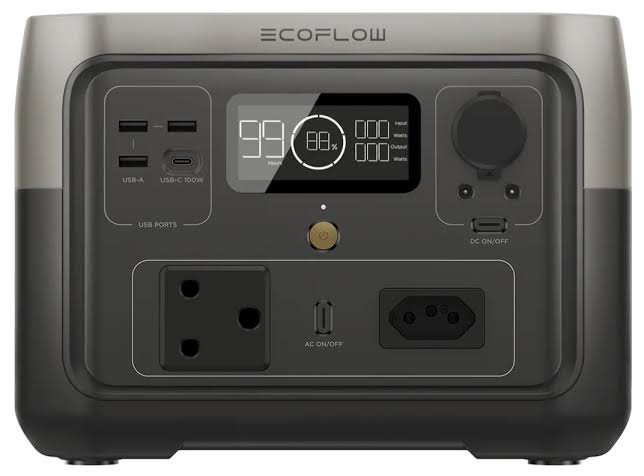
Battery performance was excellent throughout the testing. As mentioned, I consistently stretched out 2 to 3 days of battery life under average load, keeping my router powered and smartphones charged daily. This provided the control scenario for baseline testing to establish averages.
As mentioned above, the battery performed admirably with the rundown testing. It held up well throughout, whether standard use or adding performance through gaming. Beyond this, battery management is also critical to the longevity to uphold performances over the months and years.
There are many aspects to managing the battery. Using the app, users can configure the maximum charge thresholds, where it peaks and where it will turn off. Based on recommendations, I keep this between 10% at its lowest and charging up to 90% at its highest. However, for short periods, like travelling, charging up to 95% and running it down to 5% will be ideal. This will maximise performance while maintaining battery longevity.
You can also set the maximum input during charging, as previously stated. I set this to a 250W charge on a regular day, which takes just over two hours to complete. When you’re in a pinch, you can boost this up to a 660W input charge, which shortens the full recharge to below 60 minutes. Again, these are measures to increase the battery lifespan.
If you’re in a pickle, the RIVER 2 Max can use its Type-C port as an input source. This means you can charge the device using the Type-C port, but it requires a source with a high enough wattage and a bigger battery. I utilised the DELTA 2 I had on hand for this test, as it couldn’t charge via a laptop, smartphone or even a smaller portable charger. It works great but is limited to a maximum 100W charge, taking over three hours. I wouldn’t advise charging using this method, but it will work effectively enough when travelling and only has one input source and two charging stations.
As with all rechargeable devices, there is some loss to factor in. Charging from the power outlet draws an additional 10% for its 512Wh capacity while delivering between 410Wh and 450Wh as output. Most of this loss is down to the energy and heat required to charge itself and other devices. These numbers aren’t significant compared to almost all other devices applying the same principles.
The RIVER 2 Max has a LiFePO4 (LFP) battery, which EcoFlow has stated will complete over 3,000 charge cycles. This is up from the previous generation’s 500 cycles, extending the battery life to roughly ten years when recharging almost daily. Further to this, and great news to buyers, is its 5-year warranty on the battery performance. This sets the EcoFlow apart from the majority of other brands.
On a parting note on battery management, setting timers for the power is helpful if you do not turn off the unit manually after use. Via the app, you can set a period after which no power output is detected, allowing it to save on battery life. The unit slowly discharges over time when unused, although this will take five days to run down.
Is the EcoFlow River 2 Max the Portable Charger For You?
The EcoFlow RIVER 2 Max is a great portable charging station. It not only passed all tests and delivered excellent performances but also provided efficiency and simplicity to manage each aspect of its use while providing updated status and reporting. It also adds portability to its offering over the larger DELTA 2 model while also having the option to add alternate charging options while travelling. As a result, it’s almost the perfect travelling companion technology, supporting hours of use while outdoors.
The RIVER 2 Max retail price is R12,999. However, EcoFlow is currently running an ongoing sale, allowing users to purchase the device for R7,999. With all the features and performances mentioned above, this price is an absolute steal if it’s within your budget. And with a battery set to last a decade and a 5-year warranty, it’s a long-term solution.
| Model: Zenbook S 16 (UM5606) Copilot+ PC |
| Specs: CPU: AMD Ryzen™ AI 9 HX 370 Processor 2.0GHz Graphics: AMD Radeon™ 890M GPU Neural Processor: AMD XDNA™ NPU up to 50TOPS Display: 16", 3K (2880 x 1800) OLED, 120Hz, 500nits HDR, Touch Screen RAM: 32GB LPDDR5X Internal Storage: 2TB M.2 NVMe™ PCIe® 4.0 SSD |
| Brand: ASUS |
The Review
EcoFlow RIVER 2 Max
The EcoFlow RIVER 2 Max is an impressive portable power station. It delivers hours of use for the basic requirements while adding the option to extend the battery use outdoors. It may have a premium price point, but it is worth it.
PROS
- 512Wh capacity with 660W output
- Lightweight and portable
- Configuration and tracking via EcoFlow app
- Super fast-charging support
CONS
- Slightly pricier than competitors
- A single Type-C port

